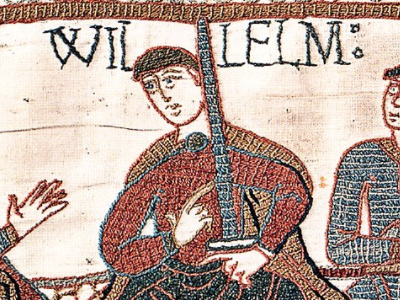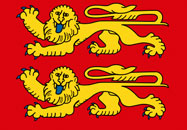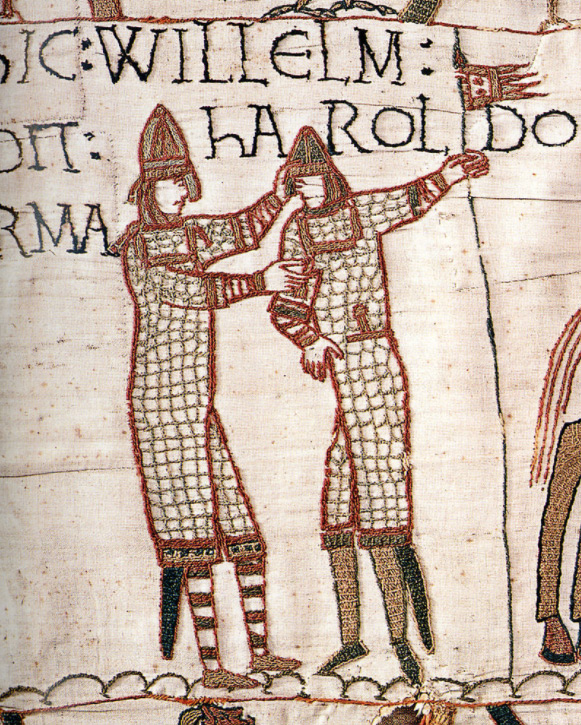William the Conqueror (1028-1087)
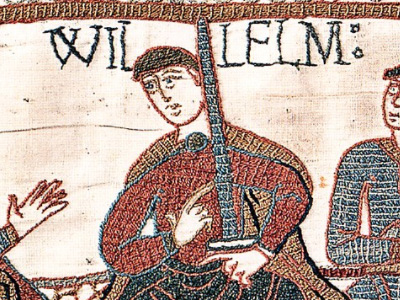
Background
Norsemen first began raiding in what became Normandy in the late 8th century. Permanent Scandinavian settlement occurred before 911, when Rollo, one of the Viking leaders, and King Charles the Simple of France reached an agreement surrendering the county of Rouen to Rollo. The lands around Rouen became the core of the later duchy of Normandy. Normandy may have been used as a base when Scandinavian attacks on England The Kingdom of England was a sovereign state on the island of Great Britain from about 927, when it emerged from various Anglo-Saxon kingdoms, until 1 May 1707, when it united with Scotland to form the Kingdom of Great Britain. The Viking invasions of the 9th century upset the balance of power between the English kingdoms, and native Anglo-Saxon life in general. The English lands were unified in the 10th century in a reconquest completed by King Æthelstan in 927. were renewed at the end of the 10th century, which would have worsened relations between England and Normandy. In an effort to improve matters, King Æthelred the Unready took Emma of Normandy, sister of Duke Richard II, as his second wife in 1002.
The Kingdom of England was a sovereign state on the island of Great Britain from about 927, when it emerged from various Anglo-Saxon kingdoms, until 1 May 1707, when it united with Scotland to form the Kingdom of Great Britain. The Viking invasions of the 9th century upset the balance of power between the English kingdoms, and native Anglo-Saxon life in general. The English lands were unified in the 10th century in a reconquest completed by King Æthelstan in 927. were renewed at the end of the 10th century, which would have worsened relations between England and Normandy. In an effort to improve matters, King Æthelred the Unready took Emma of Normandy, sister of Duke Richard II, as his second wife in 1002.
Danish raids on England continued, and Æthelred sought help from Richard, taking refuge in Normandy in 1013 when King Swein I of Denmark drove Æthelred and his family from England. Swein's death in 1014 allowed Æthelred to return home, but Swein's son Cnut contested Æthelred's return. Æthelred died unexpectedly in 1016, and Cnut became king of England. Æthelred and Emma's two sons, Edward and Alfred, went into exile in Normandy while their mother, Emma, became Cnut's second wife.
After Cnut's death in 1035 the English throne fell to Harold Harefoot, his son by his first wife, while Harthacnut, his son by Emma, became king in Denmark. England remained unstable. Alfred returned to England in 1036 to visit his mother and perhaps to challenge Harold as king. One story implicates Earl Godwin of Wessex in Alfred's subsequent death, but others blame Harold. Emma went into exile in Flanders until Harthacnut became king following Harold's death in 1040, and his half-brother Edward followed Harthacnut to England; Edward was proclaimed king after Harthacnut's death in June 1042.
HISTORY
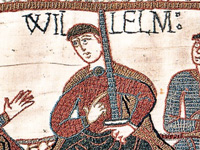
RESOURCES
This article uses material from the Wikipedia article "William the Conqueror (1028-1087)", which is released under the Creative Commons Attribution-Share-Alike License 3.0.
© Stories Preschool. All Rights Reserved.
